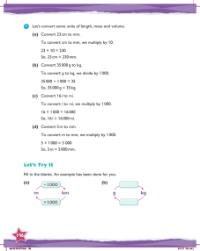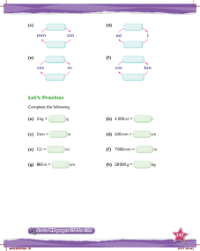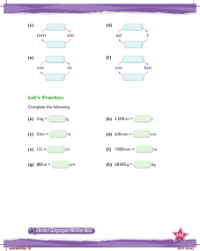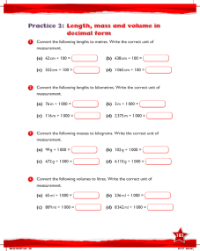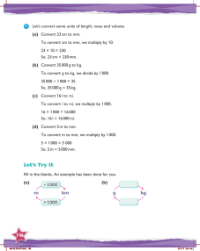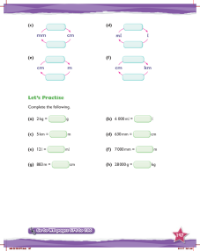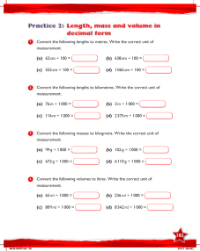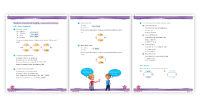Max Maths, Year 5, Learn together, Review of units of length, mass and volume (1)

In Year 5, students review the fundamental units of measurement for length, mass, and volume, with a focus on units of length. This lesson begins with a recall of the standard units of length, starting from the smallest unit, the millimetre (mm), progressing to the centimetre (cm), then the metre (m), and finally the largest unit discussed, the kilometre (km). A helpful diagram is presented to the students, illustrating how to convert between these units. To convert to a larger unit, they divide by factors of 10, 100, or 1,000 depending on the units involved. Conversely, to convert to a smaller unit, they multiply by these same factors.
The lesson delves into specific conversion examples to reinforce understanding. For instance, to convert millimetres to metres, students learn to divide by 10 and then by 100, effectively dividing by 1,000 in total. This is because there are 10 millimetres in a centimetre and 100 centimetres in a metre. The reverse process is used to convert from metres to millimetres—multiplying by 1,000. When converting centimetres to kilometres, the division is by 100 to get to metres, and then by 1,000 to reach kilometres, totalling a division by 100,000. The reverse, kilometres to centimetres, requires multiplication by 100,000. Key equivalences such as 1 cm equals 10 mm, 1 m equals 100 cm, and 1 km equals 1,000 m are emphasized to aid in understanding these conversions.

